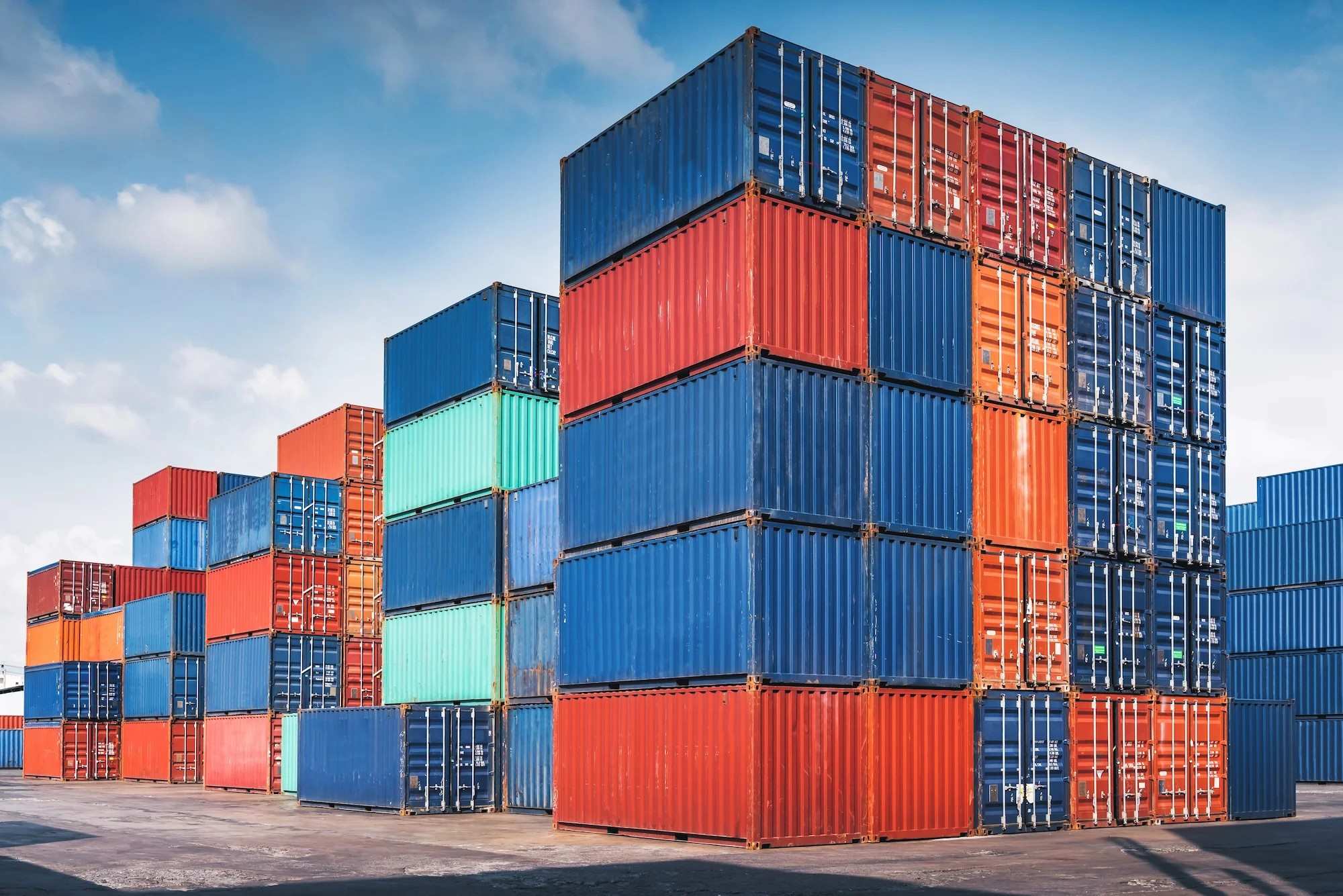Home>Technology and Computers>Running Apache In A Docker Container


Technology and Computers
Running Apache In A Docker Container
Published: January 23, 2024
Learn how to run Apache in a Docker container for efficient technology and computer management. Optimize your workflow with this comprehensive guide.
(Many of the links in this article redirect to a specific reviewed product. Your purchase of these products through affiliate links helps to generate commission for Noodls.com, at no extra cost. Learn more)
Table of Contents
Introduction
In today's fast-paced digital landscape, the seamless integration of technology and innovation has become a cornerstone of modern business operations. As organizations strive to optimize their web hosting infrastructure, the utilization of containerization technologies has emerged as a game-changer. Docker, a leading containerization platform, has revolutionized the way applications are deployed, offering unparalleled flexibility and efficiency.
One of the most widely used applications in web hosting is the Apache HTTP Server, commonly referred to as Apache. This open-source web server software plays a pivotal role in serving web content, making it a fundamental component of many websites and web applications. By harnessing the power of Docker to run Apache in a containerized environment, businesses can unlock a myriad of benefits, ranging from enhanced scalability to simplified deployment processes.
In this article, we will delve into the intricacies of running Apache in a Docker container, exploring the advantages it offers and providing a comprehensive guide for implementation. By understanding the synergy between Docker and Apache, businesses can elevate their web hosting capabilities and streamline their development workflows, ultimately fostering a more agile and resilient digital infrastructure.
Read more: Introduction To Containers
What is Docker?
Docker is a cutting-edge containerization platform that has redefined the landscape of application deployment and management. At its core, Docker enables developers to encapsulate applications and their dependencies into lightweight, portable containers, which can then be deployed across various environments with unparalleled consistency. This revolutionary approach to containerization has significantly streamlined the process of building, shipping, and running applications, empowering organizations to embrace a more agile and efficient software development lifecycle.
Unlike traditional virtualization methods, which rely on hypervisors to run multiple isolated virtual machines, Docker leverages containerization to achieve a higher level of resource efficiency and operational flexibility. Each Docker container encapsulates a specific application and its dependencies, operating in isolation from other containers while sharing the same underlying host operating system. This eliminates the need for redundant guest operating systems, resulting in a more lightweight and resource-efficient deployment model.
Furthermore, Docker containers are designed to be immutable and reproducible, ensuring that applications behave consistently across different environments, from development and testing to production. This portability and consistency are pivotal in modern software development, as they facilitate seamless collaboration among development teams and enable rapid, reliable deployment of applications.
Moreover, Docker boasts a robust ecosystem of tools and services that complement its core containerization capabilities. From container orchestration platforms like Kubernetes to container registries such as Docker Hub, the Docker ecosystem offers a comprehensive suite of solutions to address diverse deployment and management needs.
In essence, Docker has emerged as a cornerstone of modern DevOps practices, empowering organizations to embrace containerization as a fundamental building block of their infrastructure. By leveraging Docker, businesses can achieve greater agility, scalability, and operational efficiency, ultimately driving innovation and accelerating the pace of software delivery.
What is Apache?
The Apache HTTP Server, commonly referred to as Apache, stands as one of the most renowned and widely used open-source web server software globally. Since its inception in 1995, Apache has played a pivotal role in powering a significant portion of the world's websites. Renowned for its robustness, security, and extensibility, Apache has become a cornerstone of web hosting infrastructure, catering to diverse use cases ranging from small-scale personal websites to enterprise-grade web applications.
At its core, Apache is designed to fulfill the critical role of serving web content to users' web browsers. This encompasses delivering static web pages, processing dynamic content, and facilitating secure data transmission through protocols such as HTTPS. With its modular architecture and extensive support for various programming languages and server-side scripting, Apache empowers developers to craft sophisticated web applications and deliver seamless user experiences.
Apache's versatility extends beyond its role as a web server, as it also serves as a robust platform for hosting web services, application programming interfaces (APIs), and content management systems (CMS). Its flexibility and extensive feature set make it an ideal choice for organizations seeking a reliable and scalable solution for hosting their digital assets.
Furthermore, Apache's open-source nature has fostered a vibrant community of developers and contributors, resulting in a rich ecosystem of extensions, modules, and third-party integrations. This thriving ecosystem enables users to tailor Apache to their specific requirements, whether it involves enhancing security, optimizing performance, or integrating with complementary technologies.
In essence, Apache stands as a cornerstone of modern web hosting infrastructure, embodying a legacy of reliability, performance, and adaptability. By running Apache in a Docker container, organizations can leverage its robust capabilities within a containerized environment, unlocking a wealth of benefits in terms of scalability, portability, and resource efficiency. This convergence of Apache and Docker represents a powerful synergy, empowering businesses to elevate their web hosting capabilities and embrace a more agile and resilient approach to application deployment.
Benefits of Running Apache in a Docker Container
Running Apache in a Docker container offers a myriad of compelling benefits, underscoring the transformative potential of containerization in modern web hosting environments. By harnessing the power of Docker to encapsulate and deploy Apache within a containerized ecosystem, organizations can unlock enhanced scalability, streamlined deployment processes, and improved resource utilization.
1. Scalability and Resource Efficiency
Docker's lightweight and portable containers enable seamless scalability, allowing Apache instances to be rapidly deployed or scaled horizontally based on fluctuating demand. This dynamic scalability empowers organizations to efficiently allocate resources, ensuring optimal performance during peak traffic periods while conserving resources during lulls. By leveraging Docker's container orchestration capabilities, such as Docker Swarm or Kubernetes, organizations can achieve automated scaling and load balancing, further enhancing the responsiveness and resilience of their Apache deployments.
Read more: Tips For Caring For Hostas In Containers
2. Isolation and Dependency Management
Running Apache in a Docker container facilitates isolation of the web server and its dependencies, mitigating the risk of conflicts with other applications or system components. Each container encapsulates a specific version of Apache and its requisite libraries, ensuring consistent behavior across diverse environments. This isolation also simplifies dependency management, as Docker's containerization model eliminates the need to install and configure Apache and its dependencies directly on the host system, reducing potential compatibility issues and streamlining deployment workflows.
3. Portability and Consistency
Docker's portability and reproducibility are instrumental in ensuring consistent behavior of Apache across development, testing, and production environments. By encapsulating Apache within a container, organizations can achieve seamless portability, enabling the same Apache configuration and environment to be effortlessly replicated across different infrastructure setups. This consistency fosters reliable testing and deployment processes, minimizing the likelihood of environment-specific issues and enhancing the overall stability of Apache-powered applications.
4. Rapid Deployment and Version Control
The use of Docker for running Apache facilitates rapid deployment and version control, empowering organizations to swiftly roll out updates, patches, and new configurations. Docker's image-based deployment model allows for the creation of versioned images of Apache, enabling precise control over the web server's configuration and ensuring reproducible deployments. This streamlined version control mechanism simplifies rollback procedures and facilitates efficient collaboration among development teams, ultimately expediting the release cycle of Apache-based applications.
5. Enhanced Security and Isolation
Docker's containerization paradigm enhances the security posture of Apache deployments by enforcing isolation between containers and the underlying host system. This isolation mitigates the impact of potential security vulnerabilities within Apache, limiting the scope of potential exploits and bolstering the overall resilience of the web hosting infrastructure. Additionally, Docker's built-in security features, such as resource constraints and network segmentation, contribute to a more robust security posture for Apache deployments, aligning with best practices for safeguarding web servers and sensitive data.
In essence, the convergence of Apache and Docker yields a host of tangible benefits, ranging from improved scalability and resource efficiency to enhanced security and deployment agility. By embracing Docker as a platform for running Apache, organizations can elevate their web hosting capabilities, foster operational agility, and position themselves at the forefront of modern web infrastructure management.
Prerequisites for Running Apache in a Docker Container
Before embarking on the journey of running Apache in a Docker container, it is essential to ensure that the foundational prerequisites are in place. By addressing these key requirements, organizations can lay a solid groundwork for a seamless and efficient deployment of Apache within a containerized environment.
1. Docker Installation and Configuration
The first prerequisite entails the installation and configuration of Docker on the target host system. This involves obtaining the latest version of Docker Engine, the core component responsible for running Docker containers, and following the platform-specific installation instructions provided by Docker. Additionally, it is crucial to configure Docker to ensure that it operates optimally within the intended environment, taking into account factors such as network settings, storage configuration, and security considerations.
2. Understanding Apache Configuration
A fundamental prerequisite for running Apache in a Docker container is a comprehensive understanding of Apache's configuration requirements. This encompasses familiarity with Apache's core settings, virtual host configurations, SSL certificate management, and any custom modules or extensions utilized within the web server environment. By gaining a thorough understanding of Apache's configuration nuances, organizations can effectively translate these requirements into the context of a containerized deployment, ensuring that the containerized Apache instances align with the desired production environment.
3. Docker Image Creation or Selection
Another critical prerequisite involves the creation or selection of a Docker image that encapsulates the Apache web server and its associated dependencies. Organizations may opt to build a custom Docker image tailored to their specific Apache configuration and application requirements, leveraging Dockerfiles to define the container's composition and behavior. Alternatively, organizations can explore existing Docker images from reputable sources, such as the official Docker Hub repository, ensuring that the selected image aligns with the desired Apache version and configuration specifications.
4. Networking and Port Configuration
Effective networking and port configuration are essential prerequisites for running Apache in a Docker container. Organizations must define the networking requirements for Apache, including considerations for exposing the necessary ports, managing inbound and outbound traffic, and integrating the containerized Apache instances with the broader network infrastructure. By establishing clear networking parameters and port mappings, organizations can facilitate seamless communication with the containerized Apache instances while adhering to best practices for network security and accessibility.
5. Persistent Storage Considerations
In the context of running Apache in a Docker container, it is imperative to address persistent storage considerations to ensure the seamless management of web content, configuration files, and log data. Organizations must evaluate the requirements for persistent storage within the containerized Apache environment, exploring options such as Docker volumes or external storage solutions to facilitate data persistence and seamless backup and recovery processes. By proactively addressing persistent storage considerations, organizations can safeguard critical web assets and ensure the continuity of Apache-powered applications.
By diligently addressing these prerequisites, organizations can establish a robust foundation for running Apache in a Docker container, setting the stage for a streamlined and resilient deployment of the web server within a containerized environment. These foundational considerations pave the way for a cohesive integration of Apache and Docker, enabling organizations to harness the full potential of containerization while leveraging the robust capabilities of the Apache web server.
Steps to Run Apache in a Docker Container
-
Docker Image Selection: Begin by identifying a suitable Docker image that encompasses the Apache web server and aligns with the specific version and configuration requirements of your web hosting environment. You can explore the official Docker Hub repository for Apache images or consider building a custom image tailored to your organization's needs using a Dockerfile.
-
Container Configuration: Define the essential parameters for the Apache container, including port mappings, networking considerations, and persistent storage requirements. Determine the ports to be exposed by the container, ensuring seamless communication with the host system and external network. Additionally, establish networking configurations to facilitate connectivity and integrate the containerized Apache instances with the broader infrastructure.
-
Docker Container Creation: Utilize the Docker command-line interface (CLI) to create a new container based on the selected Apache image. Specify the desired container name, port mappings, networking options, and any additional runtime parameters essential for the proper functioning of the Apache web server within the containerized environment.
-
Apache Configuration Integration: If applicable, incorporate your organization's Apache configuration files, SSL certificates, and custom modules into the containerized Apache environment. This may involve mounting external volumes or leveraging Docker's persistent storage mechanisms to ensure seamless access to configuration files and essential web content.
-
Container Deployment and Execution: Deploy the configured Apache container using the Docker CLI, initiating the execution of the Apache web server within the containerized environment. Monitor the container's status and logs to verify the successful startup of Apache and ensure that it is actively serving web content as intended.
-
Testing and Validation: Conduct thorough testing to validate the functionality and performance of the containerized Apache instance. Verify that web requests are being processed correctly, SSL/TLS encryption is functioning as expected, and any custom configurations or modules are seamlessly integrated within the containerized Apache environment.
-
Monitoring and Maintenance: Implement robust monitoring and logging mechanisms to track the performance and resource utilization of the containerized Apache instance. Proactively monitor key metrics such as CPU usage, memory consumption, and network activity to ensure optimal operation. Additionally, establish maintenance procedures for routine updates, security patches, and configuration changes within the containerized Apache environment.
By following these comprehensive steps, organizations can effectively run Apache in a Docker container, leveraging the inherent benefits of containerization while harnessing the robust capabilities of the Apache web server. This seamless integration of Apache and Docker empowers organizations to elevate their web hosting infrastructure, fostering agility, scalability, and operational efficiency in the management of web applications and digital assets.
Conclusion
In conclusion, the convergence of Apache and Docker represents a transformative paradigm in modern web hosting and application deployment. By harnessing the power of Docker to run Apache within a containerized environment, organizations can unlock a host of benefits, ranging from enhanced scalability and resource efficiency to streamlined deployment processes and improved security posture.
The synergy between Apache and Docker empowers organizations to embrace a more agile and resilient approach to web hosting, fostering operational agility and facilitating rapid, reliable deployment of web applications. The seamless encapsulation of Apache within Docker containers enables organizations to achieve dynamic scalability, ensuring optimal resource utilization and responsiveness to fluctuating demand. This scalability is further augmented by Docker's container orchestration capabilities, allowing for automated scaling and load balancing, thereby enhancing the overall resilience of Apache deployments.
Moreover, running Apache in a Docker container facilitates isolation and dependency management, mitigating the risk of conflicts with other applications or system components. The encapsulation of Apache and its dependencies within containers ensures consistent behavior across diverse environments, streamlining deployment workflows and simplifying dependency management.
The portability and reproducibility offered by Docker further contribute to the appeal of running Apache in a containerized environment. Organizations can seamlessly replicate Apache configurations and environments across different infrastructure setups, fostering reliable testing and deployment processes while minimizing the likelihood of environment-specific issues.
The integration of Apache and Docker also streamlines version control and facilitates rapid deployment of updates, patches, and new configurations. Docker's image-based deployment model enables precise control over Apache's configuration, simplifying rollback procedures and expediting the release cycle of Apache-based applications.
Furthermore, the security posture of Apache deployments is bolstered by Docker's containerization paradigm, which enforces isolation between containers and the underlying host system. This isolation mitigates the impact of potential security vulnerabilities within Apache, aligning with best practices for safeguarding web servers and sensitive data.
In essence, the convergence of Apache and Docker heralds a new era of web hosting efficiency and operational agility. By embracing Docker as a platform for running Apache, organizations can elevate their web hosting capabilities, foster operational agility, and position themselves at the forefront of modern web infrastructure management. This transformative synergy empowers organizations to navigate the complexities of modern web hosting with confidence, leveraging the combined strengths of Apache and Docker to drive innovation and accelerate the pace of software delivery.












